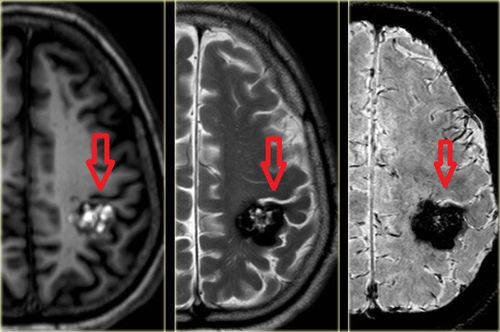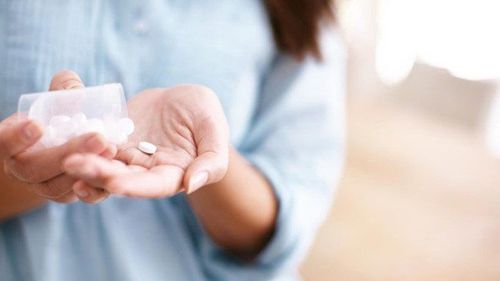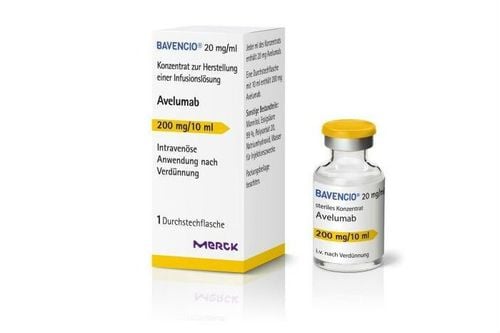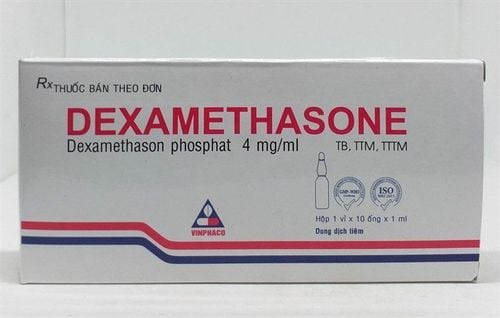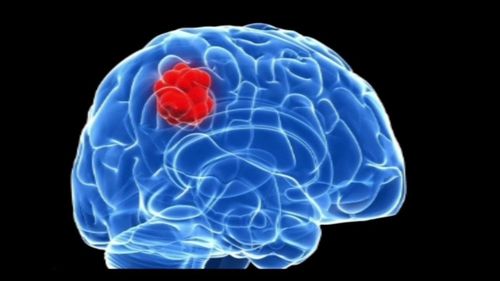This is an automatically translated article.
Lomustine belongs to the group of alkylating agents, whose main active ingredient is Lomustine. The drug has an anti-cancer effect. To learn more about the drug Lomustine, read through the article below.1. What is Lomustine?
The drug Lomustine has the main ingredient Lomustine, with the strength of 10mg, 40mg and 100mg, made in the form of capsules.Mechanism of drug:
Lomustine is a nitrosoure derivative, is an alkylated drug. Lomustine is lipid soluble, readily absorbed orally and converted to substances with alkylating effects. Lomustine also carbamylates DNA polymerase, altering cellular proteins and enzymes. Leads to inhibition of DNA and RNA synthesis. Lomustine can act on any stage of cell division, including the resting phase.
2. What does Lomustine do?
The drug Lomustine is used in the following cases:Used in combination with other anti-cancer drugs after brain tumor surgery: Myeloblastoma, astrocytoma, oligodendroglioma. In combination with second-line therapy for drug-resistant or recurrent Hodgkin's disease.
3. Dosage and usage of the drug Lomustine
3.1. Dosage
Commonly used with adults and adolescents: Initial dose when taking a lomustine drug: Oral 100 - 130mg/m2 x 6 weeks 1 time. Repeat Lomustine only when blood cells have returned to normal (leukocytes > 4000/mm3, platelets > 100000/mm3) In patients with impaired marrow function: Reduce dose to 100mg/m2 x 6 weeks 1 times. When used with other myelosuppressive agents, the dose of Lomustine must be reduced. Adjust dose for next cycle: WBC > 3000/mm3, platelets > 75000/mm3: No need to adjust dose Lomustine WBC 2000 - 2999/mm3, platelets 25000 - 74999/mm3: Reduce to 70% of previous dose WBC < 2000/mm3, platelets < 25000/mm3: Reduce to 50% of previous dose Renal failure: According to Aronoff Clcr 10 - 50ml/min: Use 75% of Lomustine dose. Clcr < 10ml/min: Use 25-50% of Lomustine dose. Renal dialysis: No additional dose required. According to Kintzel Clcr 46 - 60ml/min: Use the usual dose of Lomustine. Clcr 31 - 45ml/min: Use 70% of the dose. Clcr ≤ 30ml/min: Do not use Lomustine.
3.2. How to use
Lomustine capsules are taken orally. Take the tablet with water, do not chew or break the capsule. Drink on an empty stomach. After taking the drug, you must fast for 2 hours to avoid nausea and vomiting. Gloves must be used to handle the capsule to avoid breaking the capsule into the body. Lomustine is often used in combination with other drugs according to different regimens. Such as: Lomustine, doxorubicin and vinblastin. Cyclophosphamide, methotrexate and lomustine. Methotrexate, doxorubicin, cyclophosphamide, and Lomustine. Procarbazine, vincristine and lomustine4. Contraindications of the drug Lomustine
Do not use for people with a history of allergy to Lomustine or to any of its ingredients.5. Lomustine side effects
Common:Nausea, vomiting. Myelosuppression, thrombocytopenia, leukopenia. Kidney toxicity. Uncommon:
Dermatitis, itching, skin pain. Transient hepatotoxicity with increased transaminases, bilirubin, alkaline phosphatase, bacterial infection. Rare:
Hair loss, pharyngitis. Contact dermatitis, transient hyperpigmentation, capillary dilation. Epidermal detachment dermatitis. Easy to bleed. Loss of coordination, lethargy, disorientation, dysarthria. Visual disturbances, optic nerve atrophy, blindness. Pulmonary infiltrates, pulmonary fibrosis. Reduced kidney size, increased blood nitrogen, kidney failure.




